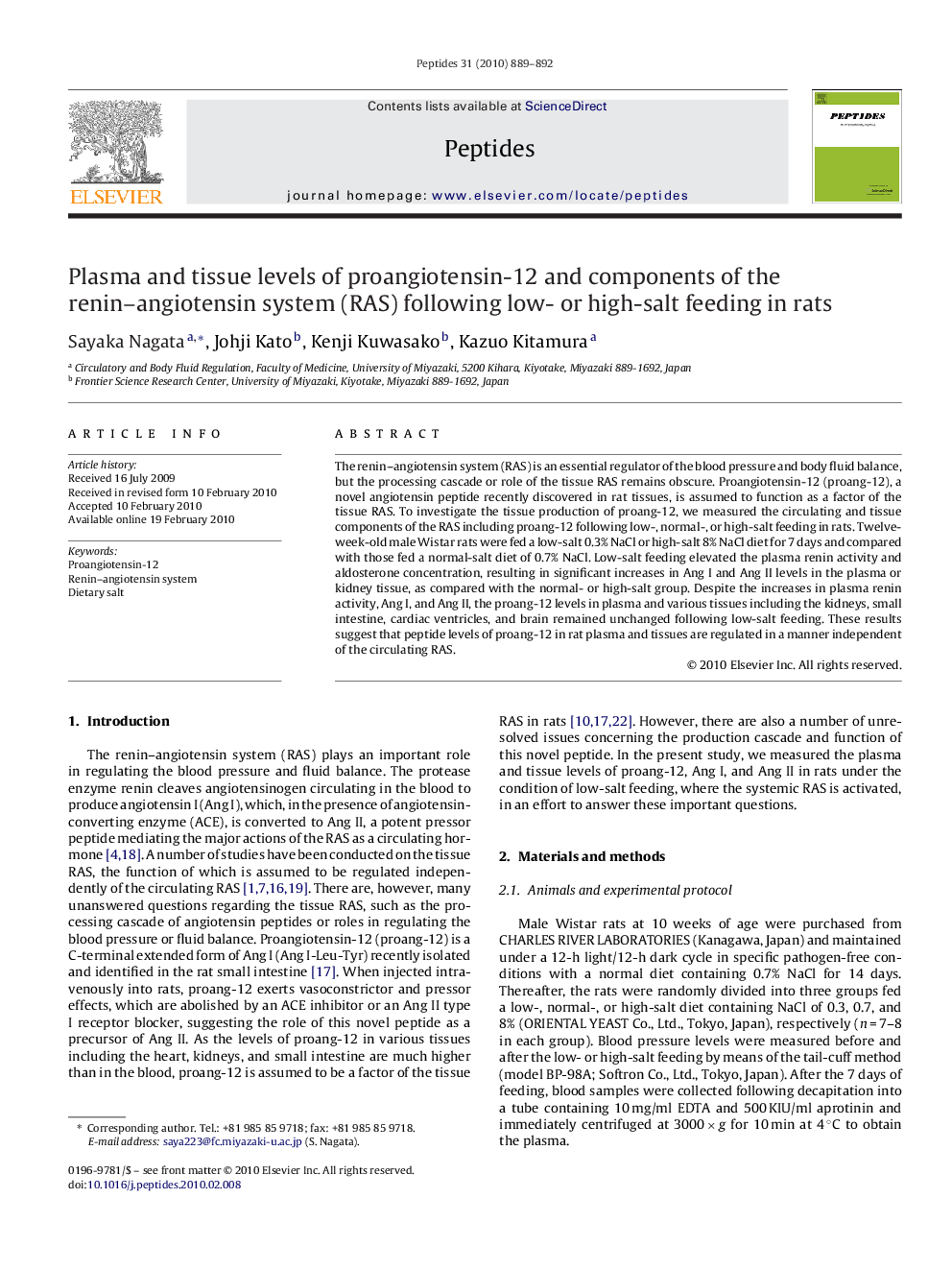| Article ID | Journal | Published Year | Pages | File Type |
|---|---|---|---|---|
| 2006755 | Peptides | 2010 | 4 Pages |
The renin–angiotensin system (RAS) is an essential regulator of the blood pressure and body fluid balance, but the processing cascade or role of the tissue RAS remains obscure. Proangiotensin-12 (proang-12), a novel angiotensin peptide recently discovered in rat tissues, is assumed to function as a factor of the tissue RAS. To investigate the tissue production of proang-12, we measured the circulating and tissue components of the RAS including proang-12 following low-, normal-, or high-salt feeding in rats. Twelve-week-old male Wistar rats were fed a low-salt 0.3% NaCl or high-salt 8% NaCl diet for 7 days and compared with those fed a normal-salt diet of 0.7% NaCl. Low-salt feeding elevated the plasma renin activity and aldosterone concentration, resulting in significant increases in Ang I and Ang II levels in the plasma or kidney tissue, as compared with the normal- or high-salt group. Despite the increases in plasma renin activity, Ang I, and Ang II, the proang-12 levels in plasma and various tissues including the kidneys, small intestine, cardiac ventricles, and brain remained unchanged following low-salt feeding. These results suggest that peptide levels of proang-12 in rat plasma and tissues are regulated in a manner independent of the circulating RAS.
